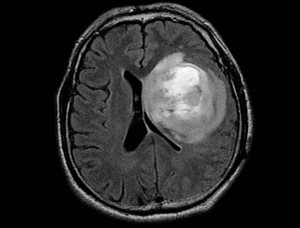Recent study by the University of North Carolina at Chapel Hill researchers are looking into ways skin cells can hunt and destroy brain tumors.
 This is the first of these experiments and they may offer a treatment for cancer. The experiments use Nobel-Prize winning technology that created embryonic-like stem cells from skin cells. The embryonic-like stem cells were thought to be used for drug screening and regenerative medicines but now they’re being used to kill brain tumors.
This is the first of these experiments and they may offer a treatment for cancer. The experiments use Nobel-Prize winning technology that created embryonic-like stem cells from skin cells. The embryonic-like stem cells were thought to be used for drug screening and regenerative medicines but now they’re being used to kill brain tumors.
“Patients desperately need a better standard of care,” said Shawn Hingtgen, Ph.D., leader of the study and an assistant professor in the UNC Eshelman School of Pharmacy and member of the Lineberger Comprehensive Care Center.
Brain tumors are known as glioblastoma. The survival rate after two years is 30 percent. Glioblastoma tends to spread it tendrils deep into the brain, therefore it is difficult to take out the entire tumor. Remnants of the tumor are left in the brain allowing for the tumor to grow back. Those with a glioblastoma diagnosis typically die within a year and a half. Creating a personalized cancer treatment might help improve the current statics. The goal is to destroy the cancer’s tendrils through the use of the patient’s skin.
Fibroblasts allow the researchers to reprogram skin cells into neural stem cells. These neural cells -have demonstrated in mice – their ability to enter the brain, find the cancerous cells, and kill the remaining cancerous cells. The neural cells can be programmed to also release a tumor-killing protein.
Within the mice, survival rates went from 160 to 220 percent. These results push the next steps forward to human stem cells.
“Our work represents the newest evolution of the stem-cell technology that won the Nobel Prize in 2012,” Hingtgen said. “We wanted to find out if these induced neural stem cells would home in on cancer cells and whether they could be used to deliver a therapeutic agent. This is the first time this direct reprogramming technology has been used to treat cancer.”
Current stem cells behaviors require that more research be done to improve the static behavior of stem cells. Stem cells tend to move on too soon before seeking out the tendrils. “Without a structure like that, the stem cells wander off too quickly to do any good,” said Hingtgen. Hingtgen used surgical glue that tripled the retention rate of stem cells in the needed area.
Skin is part of the body’s first line of defense for the immune system. It protects internal organs but outside invaders through creating a barrier between outside elements (bacteria, viruses, dirt etc.). As seen in above study, the skin’s cells hold powerful properties that are used to kill cancer cells. Strengthen the skin’s health and create a strong immune system. Learn more.
[aio_button align=”center” animation=”bounce” color=”pink” size=”small” icon=”none” text=”Order Here” relationship=”dofollow” url=”http://www.fenvir.com/order-now”]

